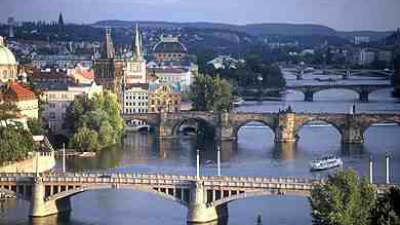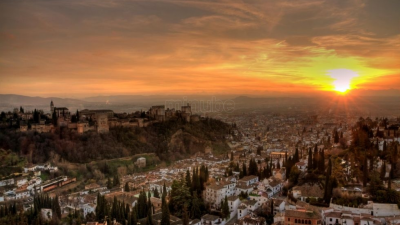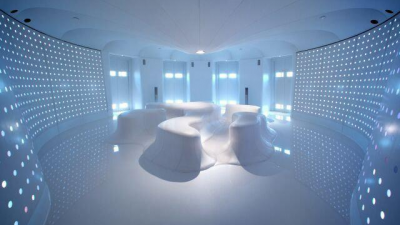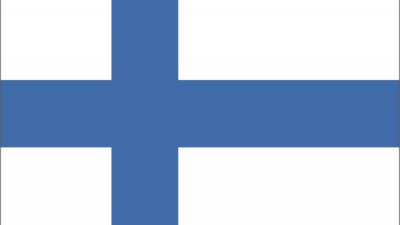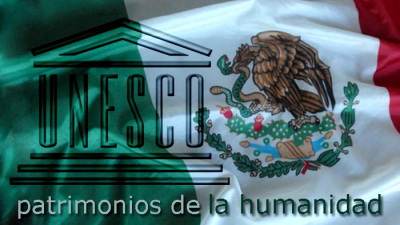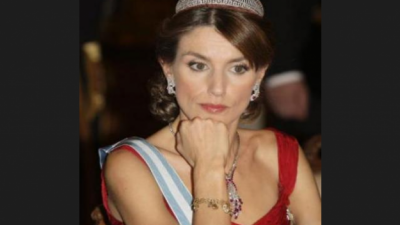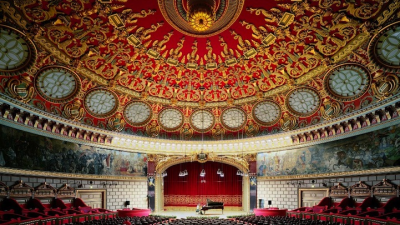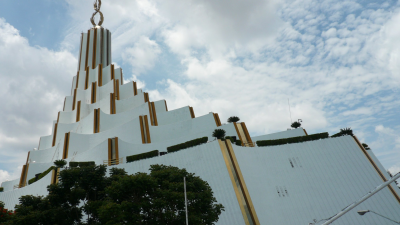The largest, most beautiful and modern cities in the world
|
NEWS

Source: listas.20minutos.es
TOP 15:
14. Sao Paulo / Sao Paulo, Latin America
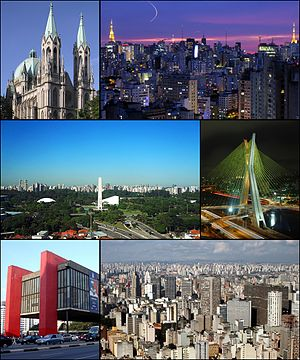
São Paulo, known as San Pablo in Spanish and officially called: Município de São Paulo, is the capital city of the Brazilian State of São Paulo and the main city of the Metropolitan Region of São Paulo. Taking into account its metropolitan area - under the concept of the city itself - it has a population of 20,893,053 inhabitants, according to the data of the 2010 census, being the second metropolis of America, 3 and one of the most populous in the world . It is the largest city in South America. It is the main financial center of Brazil.4 Some sources place it as the best city to do business in Latin America.5 It is also called by Brazilians as the city that cannot stop.6 7 Listed as a global beta city, São Paulo is one of the most important economic-financial and cultural centers of America and the world. According to projections, it is estimated that its economy will increase threefold by the year 2020, making it a city with rapid growth. In addition, according to studies by Brookings, AméricaEconomía and PriceWaterhouseCoopers, it is the richest city in Latin America, according to its GDP (PPP) .8
TOP 14:
5. Beijing, China, Asia
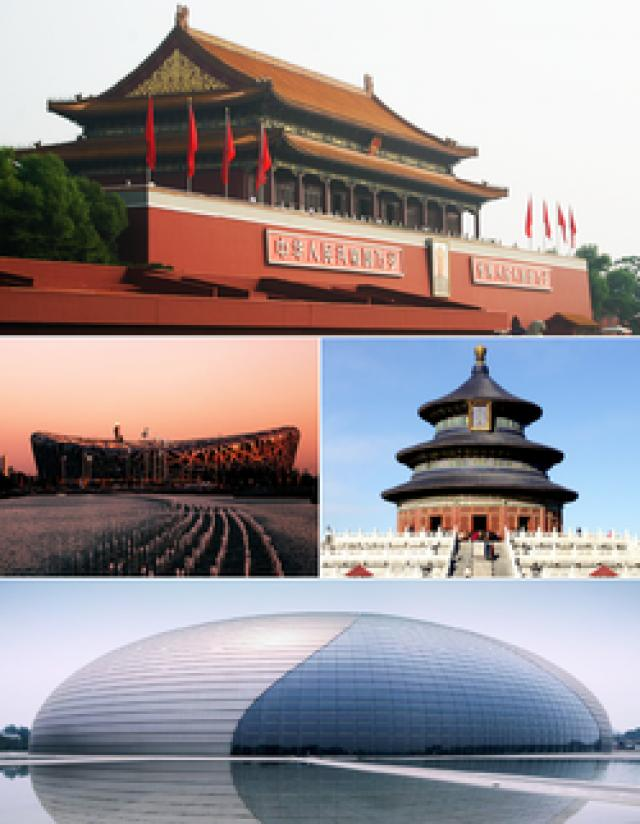
Beijing1 (Chinese: 北京, pinyin: Běijīng, Wade-Giles: Pei-ching, [peɪ˨˩ t͡ɕiŋ˥], literally "capital of the North") is the capital of the People's Republic of China and has about 20 million inhabitants. 2 Located on the periphery of the ancient Chinese civilization, Beijing became the bulwark of foreign powers that occupied North China between the 10th and 12th centuries. The Liao Dynasty established here its southern capital, the most accredited of the five of the kingdom. The Jin Dynasty, the next "barbarian" dynasty, undertook a broad urban development project in the image of the capital of the Northern Song, Kaifeng. In 1215 the Mongols razed the city, but 50 years later Kublai Kan decided to build the new capital there. The colossal imperial village that contained the imperial palaces complex was located in the central-southern area of the hypodymic layout. Emperor Yongle, the third Ming, decided to move the capital to Beijing. The walls of the northern side were moved further south so that the imperial palace complex, the so-called Forbidden City, was exactly in the center of the plane. Thus the structure of the new Beijing represents the peak of traditional Chinese urbanism, based on the organization introduced by the Mongols as well as the structure of the imperial palaces of Kaifeng and Nanjing, and also taking into account the norms of Chinese geomancy (風水). Beijing is one of the four municipalities of China, which have provincial status and are under the direct control of the central government. Beijing has been a municipality since the creation of the People's Republic of China. It is one of the most populous cities in China, surpassed only by Shanghai in terms of population. It is also an important communication hub, as it has multiple rail lines, highways and roads. It is currently recognized as the cultural, political and social heart of China.
TOP 13:
13. Seoul, South Korea, Asia
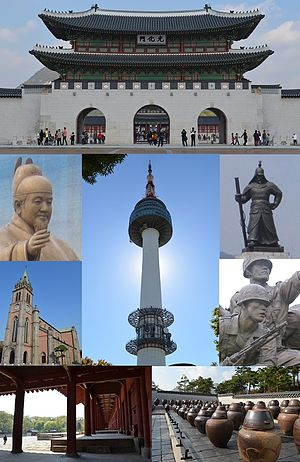
Seoul Special City (hangul: 서울 특별시, hanja: 서울 特別 市, revised romanization: Seo-ul teukbyeolsi, McCune-Reischauer: Sŏul t'ŭkpyŏlsi)? also known as Seoul (hangul: 서울, RR: Seo-ul, MR: Sŏul) ?, is the capital of South Korea since the creation of this republic in 1948, the historical capital of Korea for over 600 years and the most populous city on the Korean peninsula. It forms its own administrative unit within the Korean state. It is located northwest of the country about 50 kilometers from the demilitarized zone that separates the two Koreas. The Han River runs through the city. Today, Seoul is considered a global city, the result of an economic growth boom known as the Miracle of the Han River, which transformed the ashes produced by the bombings of the Korean War into the fourth largest metropolitan economy in the world with a GDP of 773,900 US dollars, just behind Tokyo, New York and Los Angeles. With approximately 10 million inhabitants in the city itself, it totals 24.5 million in the entire metropolitan area, including the port of Inchon and the province of Gyeonggi, which constitutes the second largest metropolitan area in the world, behind Tokyo, and the fifth largest city in the world after Tokyo, Mexico City, New York and Mumbai. In 2012, the United Nations rated Seoul as a quality of life above cities such as New York, London or Melbourne but below Tokyo or Paris.
TOP 12:
9. Rio De Janeiro, Brazil, Latin America
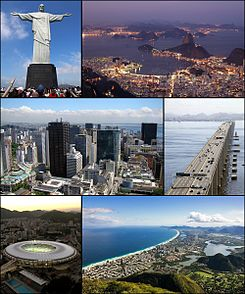
Rio de Janeiro (pronounced AFI: [ˈʁi.u dʒi ʒaˈnejɾu]), founded as São Sebastião do Rio de Janeiro, "San Sebastián del Rio de January" or popularly just called Rio, is the capital of the state of Rio de Janeiro, located in the southeast of Brazil. It is the second most populous city in Brazil, 3 has the largest international tourist traffic in the country and is the first Olympic city in South America. It was the capital of the Empire of Brazil since 1822, when the nation declared its independence from Portugal and retained that rank until the inauguration of Brasilia, in 1960. It is one of the main economic, cultural and financial resources centers of the country, and is known internationally for its cultural icons and landscapes, such as the Sugar Loaf, the statue of Christ the Redeemer (one of the seven wonders of the modern world), the beaches of Copacabana and Ipanema, the Maracanã stadium, the Tijuca National Park (the largest forest urban world), Quinta da Boa Vista, the island of Paquetá, the New Year's Eve Parties in Copacabana and the Carnival celebration. It represents the second highest GDP in the country and 30th largest in the world, in addition to hosting two of the most important Brazilian companies - Petrobras and Vale do Rio Doce, now privatized - and the main oil and telephone companies, as well as the largest conglomerate of media and communications companies in Latin America. [citation needed] It is the second largest research and development center in Brazil, reaching 17% of the national scientific production (according to 2005 data). Rio de Janeiro is considered a global Beta- city by the 2008 inventory of the University of Loughborough (GaWC) .4 It is known worldwide as the "Wonderful City" (Cidade Maravilhosa), in Portuguese, I host the 2013 Confederations Cup and the Day World Youth 2013, and will also host the 2014 Soccer World Cup and the 2016 Olympic Games.
TOP 11:
6. Los Angeles, USA, North America
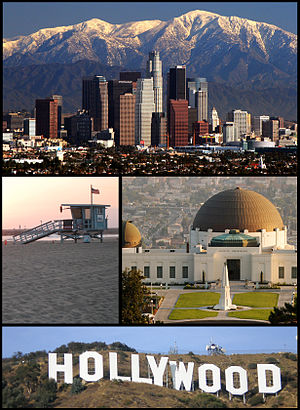
Los Angeles (in English Los Angeles pronounced [lɒs ˈændʒəˌləs] or [los ˈændʒəˌli: z]) is the largest and most populous city in the state of California and the second in the United States in number of inhabitants.1 Called abbreviated LA, it has a population according to the 2010 census of 3,792,621 inhabitants and an area of 1,214.9 km².2 The Los Angeles metropolitan area, concentrated in five counties, has an estimated population in 2012 of around 18 million inhabitants.3 Angeles is the county seat of the homonymous county and its inhabitants are known as "angels." 4 It was founded in 1781 by the Spanish governor Felipe de Neve as The People of Our Lady the Queen of the Angels of Porciuncula. In 1821 he became part of Mexico after his independence from Spain, and later from the United States in 1848 after the US intervention in Mexico. It was incorporated as a city on April 4, 1850 - five months before California obtained its status. It is one of the main cultural, economic, scientific and entertainment centers of the world. The city hosted two Olympic Games (1932 and 1984) and hosts many cultural and scientific institutions.
TOP 10:
7. Sydney, Australia, Oceania
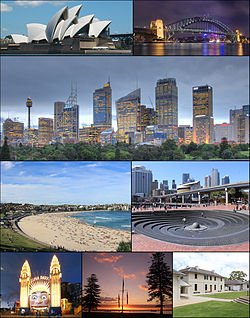
Sydney (in English Sydney; pronounced: / ˈsɪdni /) is the largest and most populous city in Australia, with a population in its metropolitan area close to 4,034,000 inhabitants (estimated in 2008) .5 It is the capital of the state of New South Wales and was the settlement of the first British colony in Australia. It was founded in 1788 in Sydney Creek by Arthur Phillip, admiral of the First Fleet of Great Britain, 6 and is the oldest city in the country.7 It is located in southeastern Australia, on the shores of the wide Jackson Bay. The city was built around the port of Jackson, which comprises the port of Sydney. In the city highlights the Sydney Opera House, the Sydney Harbor Bridge and its beaches. The metropolitan area is surrounded by national parks that contain bays and rivers. The city has hosted international sporting events such as the Commonwealth Games of 1938, the 2000 Sydney Olympics and the 2003 Rugby World Cup final, among others. The main airport that serves Sydney is Kingsford Smith International Airport, commonly known as Sydney Airport. Sydney is one of the most multicultural cities in the world, and is reflected in its role as the main destination for Australian immigrants.8 According to a Mercer study on the cost of living, Sydney proved to be Australia's most expensive city and the 15th worldwide.9 Sydney also leads the top 10 cities with the best quality of life in the world, in another study conducted by the same company in conjunction with The Economist.10 11
TOP 9:
4. Shanghai, China, Asia
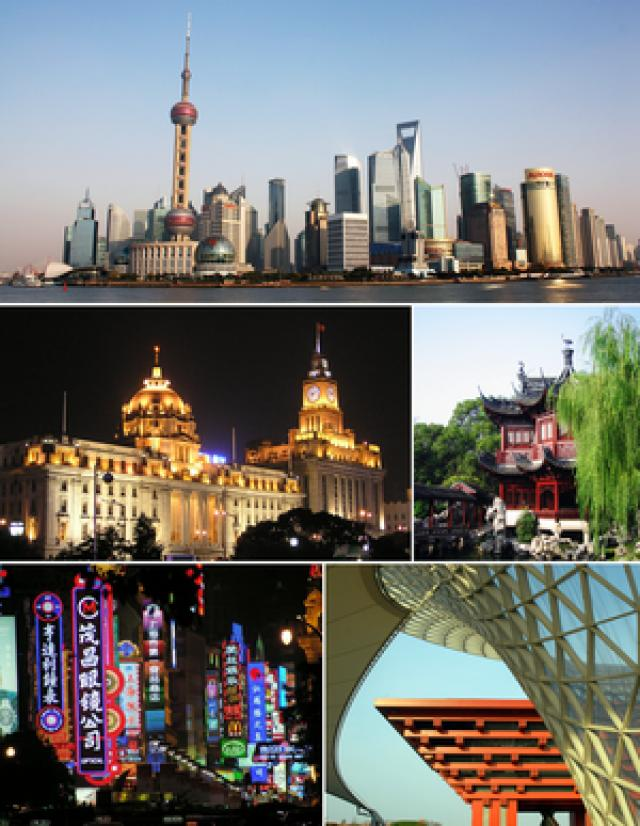
The Municipality of Shanghai2 (read Chinese shan-jái: 上海, pinyin: Shànghǎi; Tangerine pronunciation: [ʂaŋ˥ xai˩], Chinese wu shanghainese: zånhae) is the most populous city in China and one of the most populous in the world with more 20 million inhabitants.3 Located in East China, Shanghai lies in the Yangtze River Delta, centered on the East China Sea coast and is managed at the highest level with the category of municipality under central jurisdiction.4 The area where the city is situated it was colonized and settled by refugees fleeing the Mongols towards 960-1126 AD. C. Formerly engaged in fishing and textiles but its importance grew in the nineteenth century thanks to its strategic location as a seaport and for being forced to open to international traffic by the Treaty of Nanjing in 1842.5 Shanghai was flourishing as a commercial hub between China and the colonial powers and as a financial and commercial node from 1930.6 The western population began to leave the area at the beginning of the Pacific War in 1941 until finally, after the revolution and civil war, in 1949 the activity of Shanghai was reduced considerably by stopping receiving foreign investment. With the economic reforms during the 90s, Shanghai experienced spectacular financial and tourist growth, hosting many multinational companies and avant-garde skyscrapers. It is currently the largest port in the world by volume of goods.7 The city is a tourist destination for its monuments such as the Bund, the Temple of the City God, the skyscrapers of the Pudong and as a cosmopolitan center of culture and design, 8 9 on the other hand it hosted the Universal Exhibition of 2010 on urban planning of the future. Today Shanghai is usually described as the "star piece" of the world's fastest growing economy10 immersed in a competition with Hong Kong for becoming the largest city in China. Administratively, Shanghai is one of the four municipalities of the People's Republic of China directly administered by the country's central government. Shanghai is the economic capital of China. It occupies an area of 6,340 km². The local language is not Mandarin, but shanghainese, a variety of Chinese wu (吳語, wúyǔ).
TOP 8:
11. Paris, France, Europe
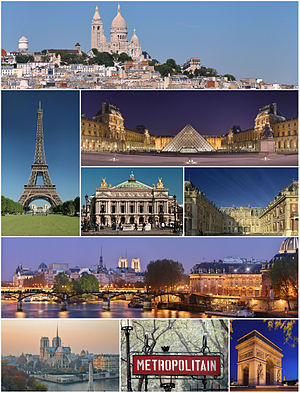
Paris (in French Paris, pronounced About this sound [paʁi] (? · I)) is the capital of France and the Ile-de-France region. Constituted in the only unidepartmental commune of the country, it is located on both banks of a long meander of the Seine river, in the center of the Parisian Basin, between the confluence of the Marne and the Seine, upstream, and the Oise and the Seine, downstream. The city of Paris within its narrow administrative boundaries has a population of 2 243 833 inhabitants (2010) .2 However, during the twentieth century, the metropolitan area of Paris expanded beyond the boundaries of the municipality of Paris, and is today the fifth largest city in the European continent and the second largest by metropolitan area with a population of 12 223 100 inhabitants (2010) .4 The Paris region (Ile de France) is together with London, one of the most economic centers important in Europe.6 With 607 billion euros (845 billion dollars), it produced more than a quarter of France's Gross Domestic Product (GDP) in 2011.7 La Défense is the main business district in Europe, 8 houses the headquarters of almost half of the large French companies, as well as the headquarters of twenty of the 100 largest in the world. The city is the most popular tourist destination in the world, with more than 42 million foreign visitors per year.9 It has many of the most famous and admired monuments of the world: the Eiffel Tower, the Notre Dame Cathedral, the Avenue of the Champs Elysees, the Arc de Triomphe, the Sacré Cœur Basilica, the former Hospital of the Invalids, the Pantheon, the Defense Arch, the Opera Garnier or the Montmartre neighborhood, among others. It also houses world-renowned institutions: the Louvre (the most famous and visited museum in the world), the Orsay Museum and the National Museum of Natural History of France, as well as an extensive system of higher education of international prestige.
TOP 7:
15. Santiago, Chile, Latin America
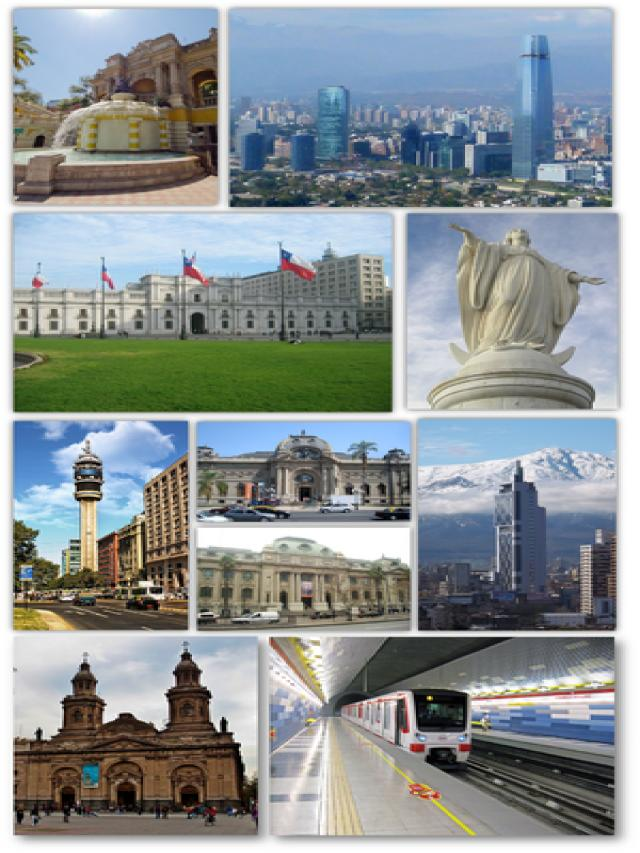
Santiago, also called Santiago de Chile, 1 is the capital of Chile.2 It is the main urban center of the country and its metropolitan area is known as Gran Santiago. It is also the capital of the Santiago Metropolitan Region.2 The city is home to the main administrative, commercial, cultural, financial and governmental agencies of the country - except for the National Congress, 3 of the Chilean Navy, the National Customs Service, the National Fisheries Service and the National Council of Culture and Arts all located in Valparaíso— and, in addition, it is the seat of ECLAC. Although it is generally conceived as a single large city, Santiago does not constitute a single administrative unit but, on the contrary, is part of the territory of 37 communes, of which 26 are completely within the urban radius and 11 with some part outside it . Most of the metropolis is located within the Province of Santiago, with some communes within the provinces of Chacabuco, Cordillera, Maipo and Talagante. Santiago is approximately at coordinates 33 ° 26′16 ″ S 70 ° 39′01 ″ W, at an average altitude of 567 meters above sea level.4 In 2002, the conurbation extended over 641.4 km² and had a population of 5 428 590 inhabitants, 5 which was equivalent to about 35.9% of the total population of the country. According to these figures, Santiago is the fifth most populous metropolitan area in Latin America, the seventh most populous city in Latin America and, according to some estimates, one of the 50 most populous urban agglomerations in the world.6 Santiago de Chile is considered the second best city to do business in Latin America, 7 n 1 as well as the third city in South America, after Montevideo and Buenos Aires, with better quality of life - the fifth in Latin America and the 90th in the world - .8 It also figures as the the second safest South American city - the fifth Latin American and the 107th world - .8 In addition, it is considered a global city of "alpha class -", 9 and the 53rd highest income city in the world, with a GDP ( PPP) of USD 91 billion in 2005 and an estimated USD 160 billion by 2020.10 In 2012, it was rated as the third most competitive South American city - the third Latin American and 68th world - .11 12 In 2013, it was cl as the smartest city in Latin America.13
TOP 6:
8. London, Great Britain, Europe
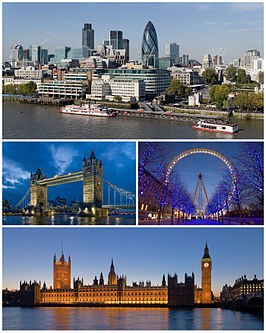
London (London in English, About this sound ˈlʌndən (? · I)) is the capital of England and the United Kingdom, as well as the largest city and urban area of Great Britain and the entire European Union.4 Located on the banks of the River Thames, London is an important human settlement since it was founded by the Romans with the name of Londinium almost two millennia ago.5 The old city center, the City of London, basically retains its medieval perimeter of a square mile. Since the 19th century the name "London" also refers to the entire metropolis developed around this nucleus.6 The bulk of this conurbation forms the London region and the administrative area of Greater London, 7 governed by the mayor and the assembly of London. 8 London is a global city, a hub in the field of arts, commerce, education, entertainment, fashion, finance, media, research, tourism or transport. 9 It is, next to New York, the main financial center of the world10 11 12 and one of the metropolitan areas with the highest GDP.13 14 London is also a world cultural capital, 15 16 17 18 the most visited city if we attend to the number of international visits19 and has the largest airport system in the world according to passenger traffic.20 Likewise, the 43 universities in the city make up the highest concentration of higher education centers in Europe.21 In the year 2012 London became the only city to host the celebration of three Summer Olympic Games.22 Multicultural city, in London people from a large number of cultures live together and more than three hundred different languages are spoken. The 2011 census revealed that 60% of residents are white and only 45% of Londoners are British, so they are a minority for the first time.23 24 In March 2011 London had an official population of 8 174 100 people, a figure that makes it the most populous municipality in the Old Continent and accounts for 12.5% of the total population of the United Kingdom. 25 The urban area of Greater London, with 8 278 251 inhabitants, is the second Europe's largest, but its metropolitan area, with an estimated population of between 12 and 14 million, 26 27 is the largest in the continent. From 1831 to 1925 London, as the capital of the British Empire, was the most populous city in the world.28 London has four enclaves declared World Heritage: the Tower of London, the Royal Botanic Gardens of Kew, the site formed by the Palace and Westminster Abbey and the Church of Santa Margarita and Greenwich (where the Royal Observatory that marks the Greenwich meridian and the middle time is located) .29 Other famous places in the city are Buckingham Palace, the London Eye, Piccadilly Circus, St. Paul's Cathedral, Tower Bridge or Trafalgar Square. London also has numerous museums, art galleries, libraries, sporting events and other cultural institutions such as the British Museum, the National Gallery, the Tate Modern, the British Library and the forty theaters of the West End.30 The London Underground, which in 2013 he turned 150, he is the oldest in the world.31 32
TOP 5:
2. Tokyo, Japan, Asia
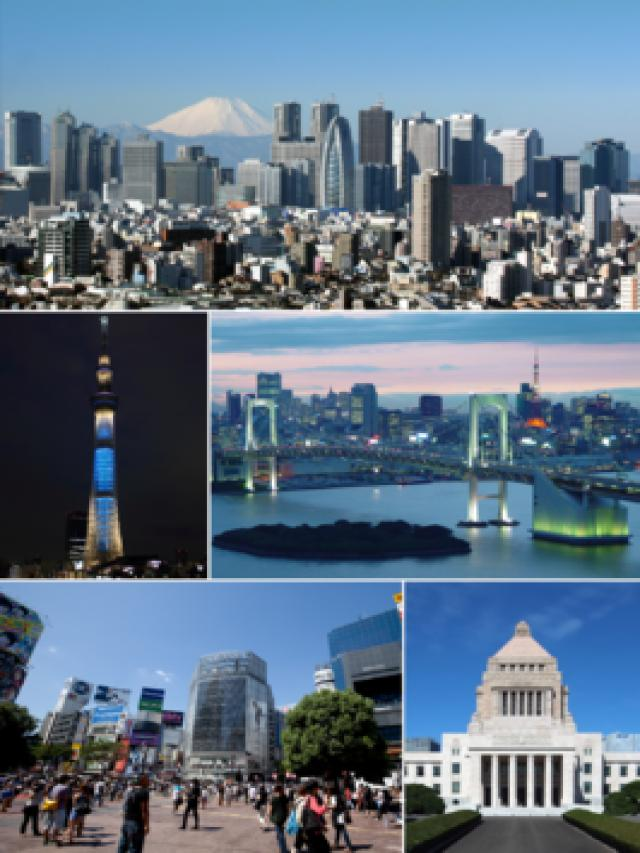
Tokyo (東京 ō Tōkyō-to ?, lit. 'Eastern capital'; Japanese pronunciation: About this sound [ˈtoːkjoː] (? · I)) is the de facto capital2 of Japan, located in the center-east of the island from Honshu, specifically in the Kanto region. Together it forms one of the 47 prefectures of Japan, although its official name is metropolis or capital (都 -to). The city is the center of politics, economy, education, communication and popular culture of the country. It also has the highest concentration of corporate headquarters, financial institutions, universities and colleges, museums, theaters, and commercial and entertainment establishments throughout Japan. With a population that exceeds 13 million inhabitants, it is subdivided into 23 neighborhoods (区 -ku); 26 cities (市 -shi); a district (郡 -gun) subdivided into three villages (町 -chō or -machi) and a village (村 -son or -mura); and four sub-prefectures (支 庁-shichō) subdivided into two villages and seven villages, representing several small islands south of Honshu that extend beyond 1,800 km from Shinjuku, capital of the metropolis and seat of the governorate. The center of Tokyo, with its 23 neighborhoods, occupies a third of the metropolis, with a population close to 13.23 million inhabitants; This area is what is known internationally as the city of Tokyo. Its metropolitan area has more than 36 million inhabitants, being the largest urban agglomeration in the world. Although Tokyo is the most common Romanization of the name in Japanese, the name of the city is Tokyo in Spanish and other languages - including German and Dutch. Tokyo is written in English and other languages, although Tokyo was also written in the past. In the past, the city was referred to as Tokei, Edo or Yedo. The name of Tokyo is Tokyo. Tokyo hosted the 1964 Olympic Games and will host the 2020 Olympic Games.3
TOP 4:
3. New York, USA, North America
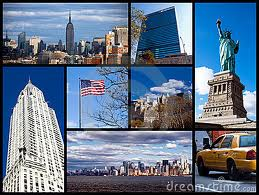
New York (in English and officially, New York City) is the most populous city of the homonymous state, in the United States of America, and the second urban agglomeration of the continent and North America after the Federal District of Mexico. It is the center of the New York metropolitan area, which is among the five largest urban agglomerations in the world.2 Since the end of the 19th century it has been one of the world's leading centers of commerce and finance. New York is considered a global city, given its worldwide influences in the media, in politics, in education, in entertainment and fashion.3 The artistic and cultural influence of the city is one of the strongest from the country. In addition, it is the headquarters of the United Nations Organization, which also makes it an important point of international relations. The city is made up of five boroughs (sometimes translated as district or commune) each of which coincides with a county: Bronx, Brooklyn, Manhattan, Queens, and Staten Island. With more than 8.4 million New Yorkers in an urban area of 830 square kilometers (320 mi²), New York is the second most densely populated city in the United States, behind Union City, New Jersey, located on the other side of the Hudson River.4 The city has many neighborhoods and buildings recognized worldwide. For example, the Statue of Liberty, located on the island of the same name, and Ellis Island, which received millions of immigrants who arrived in the United States in the late nineteenth and early twentieth centuries. Wall Street has been one of the leading global finance centers since World War II and is the seat of the New York Stock Exchange. The city has also concentrated many of the tallest buildings in the world, including the Empire State building and the twin towers of the World Trade Center, which were torn down in the attacks of September 11, 2001. The city also It is the cradle of many American cultural movements, such as Harlem's revival in literature and visual arts, abstract expressionism (also known as the New York School) in painting, and hip hop, 5 punk6 and Tin Pan Alley in music. In 2005, almost 170 languages were spoken in the city, and 36% of its population was born outside the United States.7 8 With its subway running 24 hours a day and the constant movement of traffic and people, New York It is known as "the city that never sleeps."
TOP 3:
1. Dubai, United Arab Emirates, Asia
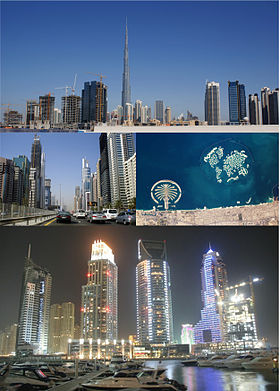
Dubai - in Arabic: دبيّ Dubayy - is one of the seven emirates that make up the United Arab Emirates - UAE. It is located on the coast of the Persian Gulf, in the Arabian desert, and borders on the south with the emirate of Abu Dhabi, with that of Sharjah on the northeast and, through the exclave of Hatta, with the Sultanate of Oman on the southeast and with the emirates of Ajmán and Ras al-Jaima. The salt water inlet of the Persian Gulf called Khawr Dubayy crosses the capital city in a northeast-southwest direction.6 7 Its surface area is 4113 km².2 The name "Dubai" may come from Arabic or Persian, 8 and it first appeared Once in the literature in 1095, cited by the geographer Abu Abdullah al-Bakri, and then by the Italian merchant Gaspero Balbi on his visit to the territory in 1587.9 10 The origin of the word could come from Daba - a derivative of Yadub - which means «Thing that flows», in reference to the water body of Khawr Dubayy.11 There is not much documented information about prehistoric times. It is known that the first inhabitants settled in the current territory of the emirate were engaged in pearl trade, 12 an activity on which they would base their economy until the 20th century, 13 and that would allow them to have commercial relations with China, India and Pakistan. Its economic progress and strategic location in the Arabian Gulf caused other countries to catalog their capital city of the same name as the "Venice of the Gulf." 14 The ambition at that time to seize trade routes led several countries to have disputes with each other. . Finally, in 1766, Britain took control of the routes that linked them to the Persian Gulf, so Dubai was affected15 and since then it continued to maintain a dependency on the British government, which would prevail for almost two centuries. In 1833, the Al Maktoum clan moved from their settlement south of Abu Dhabi and invaded Dubai. Since then, said dynasty governs the emirate and marked the end as a dependency of Abu Dhabi. The relationship with the English had a special importance, since it guaranteed the emirate's protection against possible invasions of other nomadic tribes, 15 in addition to the English intervening on some occasions to maintain internal political and social stability.16 The discovery of oil in Dubai, in the 1960s, meant a significant change in its economy and administration. In the following decade, the UAE was formed, with which Dubai ended its dependency relationship with the United Kingdom.13 The Dubai government is governed by a system of constitutional monarchy, headed by Sheikh Mohamed bin Rashid Al Maktum since 2006. There The Municipality of Dubai, whose objectives are oriented to urban planning, citizen services and the maintenance of local services.17 Most of the population residing in the emirate is foreign, and comes from the rest of the Asian continent. 18 As mentioned earlier, the economy had a significant boom from the development of the oil industry in the country, 19 however oil does not contribute significantly to income generation.20 The sectors in which more income is generated they are construction, commerce, entrepôt - also referred to trade in a free zone - and financial services; 21 the tourist approach It is also noteworthy, especially the one for shopping.22 In this last aspect, it should be added that Dubai houses several notable buildings such as the luxury hotels Burj Al Arab and Burj Khalifa - the tallest in the world, with 828 m of height—, the artificial ports of Mina Rashid and Jebel Ali, and the housing complex of artificial islands The World and The Palm Islands. The low unemployment rate has attracted a large number of foreigners to move to the emirate in search of better job opportunities.23 24 On their culture, it can be concluded that they are strongly influenced by Islam and Arab and Bedouin societies, 25 which remains reflected in the rules of etiquette and clothing, literature, gastronomy and art.
TOP 2:
10. Buenos Aires, Argentina, Latin America
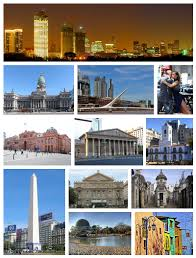
The city of Buenos Aires, formally the Autonomous City of Buenos Aires (abbreviated CABA) - also called Federal Capital because it is the seat of the federal government - is one of the twenty-four federal entities and capital of the Argentine Republic. It is located in the central-eastern region of the country, on the western bank of the Río de la Plata, in the middle of the Pampas plain. The final results of the 2010 census estimate the population of the city at 2 890 151 inhabitants, and that of its urban agglomerate, Greater Buenos Aires, at 12 801 364 inhabitants; 2 3 being the largest urban area of the country, the second of South America, Latin America and the southern hemisphere, and one of the 20 largest cities in the world. It is, together with São Paulo and Mexico City, one of the three Latin American cities of the alpha category, according to the GaWC study. The city of Buenos Aires is among the cities with the highest quality of life in Latin America, and its per capita income is among the three highest in the region.8 9 It is the most visited city in South America. The urban fabric resembles a fan that limits the south, west and north with the province of Buenos Aires and to the east with the river. Officially the city is divided into 48 neighborhoods that derive, the oldest, from the parishes established in the nineteenth century. The metropolis is an autonomous city that constitutes one of the 24 districts into which the country is divided. It has its own executive, legislative and judicial powers, in addition to its own police. Its urban profile is markedly eclectic. Art Deco, Art Nouveau, Neogothic and Bourbon French styles are mixed because of immigration. By this last one it is known in the world by the nickname of "The Paris of America". The skyscraper is another very common element of the urban panorama of Buenos Aires. It was chosen by Unesco as City of Design in 2005 and as World Book Capital of 2011. And it has been chosen as the venue for the 2018 Youth Olympic Games. The City of Buenos Aires is the main educational center of the country and an important core of artistic and intellectual activity. Among its renowned institutions is the University of Buenos Aires, being among the best and most prestigious universities in Latin America.16 17 18 It is among the cities with the highest concentration of theaters worldwide. Among them, the Teatro Colón is, for its impeccable acoustics, trajectory and dimensions, one of the five most important opera houses in the world. The Buenos Aires Subway is the first underground transportation system in Latin America and the entire Southern Hemisphere. The City of Buenos Aires was founded in 1580 by Juan de Garay. In 1536 there was a first settlement, a fort, which was not a city since the Laws of the Indies were not fulfilled, made by Pedro de Mendoza, abandoned in 1541 due to the constant siege of the natives, belonged to the Viceroyalty of Peru of the Spanish Empire. In 1776 it was designated capital of the newly created Viceroyalty of the Rio de la Plata by the king of Spain. During the first of the English invasions, which took place in 1806, the city was occupied by English armed forces and remained for 45 days under the flag of the United Kingdom. In 1810, the inhabitants of the city carried out the May Revolution, which expelled the viceroy, established a board of self-government and began the war for the independence of Argentina. During the Bartholomew Miter government, the Commitment Law was passed, for which it was the seat of the national government and, in turn, of the provincial public powers. Finally, in 1880, during the government of Nicolás Avellaneda, it was federalized. Greater Buenos Aires was one of the main destinations of the immigration process that Argentina had since the end of the 19th century. In 1913, the Buenos Aires Subway, the first metro in Latin America, was inaugurated. After the Argentine Constitution Reform of 1994, the city was able to have its own Constitution and an autonomous government of direct election.
TOP 1:
12. Mexico DF, Mexico, North America
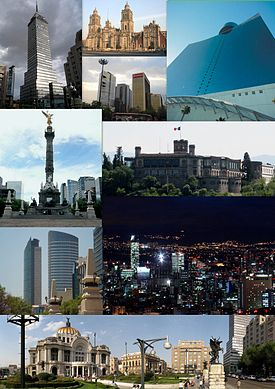
Mexico City, Federal District, or in its abbreviated form Mexico City, is the capital and seat of the federal powers of the United Mexican States.9 It is a federal entity of Mexico that is not part of the 31 Mexican states , but belongs to the Federation, which together make up the 32 federal entities of the nation. Mexico City is the largest urban center in the country, as well as the main political, academic, economic, fashion, financial, business and cultural center. Mexico City obtained a GDP in 2011 of 470 billion dollars.10 While in 2012 it had an average growth of 3.5%, 5 which increased its GDP to 486.4 billion dollars. Listed as a global city, Mexico City is one of the most important financial and cultural centers in America and the world. The growth of the city is one of the fastest globally, and its economy is expected to triple by the year 2020. Mexico City is located in the Valley of Mexico, a large basin on the high plateau of downtown Mexico, at an altitude of 2,240 meters and has an area of 1,495 square kilometers, divided into sixteen delegations. The population of the capital is around 8.8 million inhabitants, according to the definition agreed by the federal and state government, the capital together with its conurbation area (Metropolitan Zone of the Valley of Mexico) total more than 21 million inhabitants , which makes it the third largest urban agglomeration in the world, the largest in the Americas and the most populous Spanish-speaking city on earth. [citation needed] The city was founded by the Mexica in the center of the Valley of Mexico, with the name of Mexico-Tenochtitlan, in 1325, a city that would become what we know today as the capital of the Aztec Empire. In the sixteenth century the Mexica were defeated with the capture of the city at the hands of the emerging Spanish Empire in 1521, an event that will mark the beginning of the Conquest of Mexico. In 1535 the Viceroyalty of New Spain and Mexico City rebuilt and established on old Mexico-Tenochtitlan is officially created, declared as the capital of the Viceroyalty of New Spain that served as the political, financial and administrative center of the Spanish Empire territories in North America, Central America, Asia and Oceania. The Spanish dominion over the capital city comes to an end at the end of the war of independence in 1821 with the entry of the Trigarant Army to Mexico City. In the year of 1823, with the proclamation of the First Federal Republic officially ends the First Mexican Empire (1821-1823) and on November 18, 1824, after Independence, the Congress decided to create a Federal District, a different entity to the other states, to house the Executive, Legislative and Judicial powers, territory that did not belong to any particular state and thus avoid the excessive influence of a state on the others of the federation. Thanks to Brother Servando Teresa de Mier and some other people who supported his cause, Mexico City was chosen as the place where the union's powers would be concentrated. After years of demanding political autonomy, city residents received the right to elect the Head of Government (a position that shares some functions of a mayor and others of a state governor) and the Legislative Assembly by popular vote in 1997. Since then, the majority of the inhabitants of the DF have decided to elect the leftist governments to lead the city government. Recently the city has undergone a series of liberal reforms.

